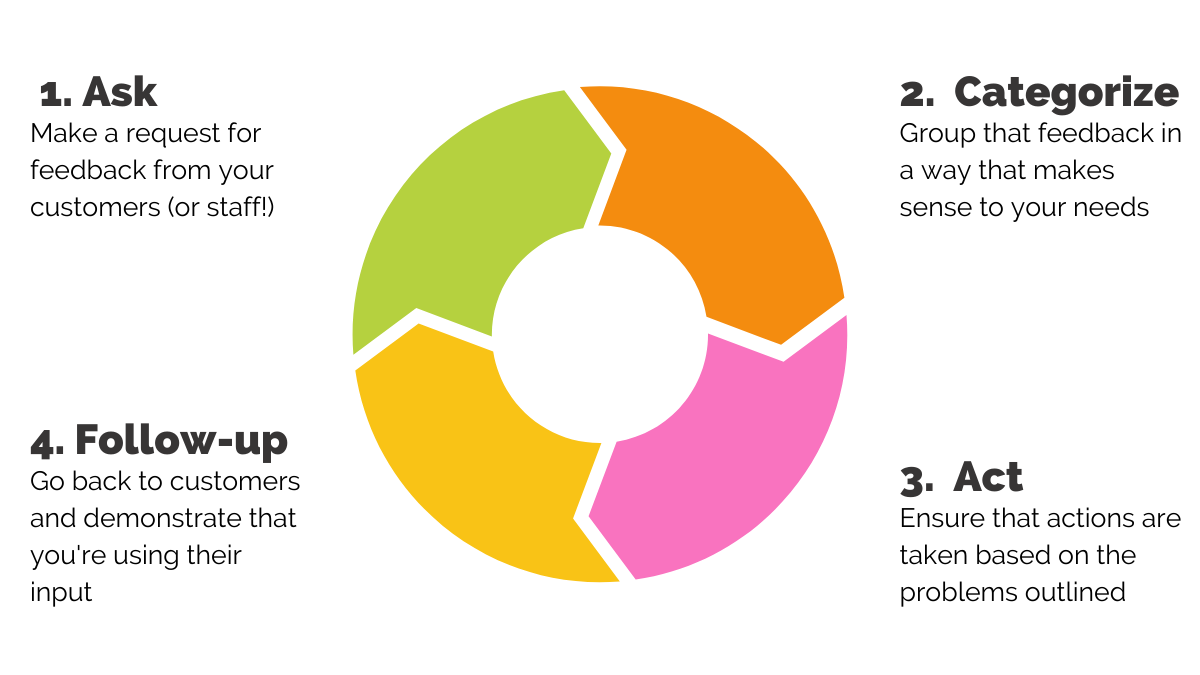What are product reviews and business reviews?
Let’s face it, customers trust other customers. It’s for this very reason that it’s so important to have product reviews or business reviews visible on your website or ecommerce store.
Since reviews and customers are from real users of your products, consumers see these reviews as a reliable source of information. In fact, 85% of consumers trust them as much as personal recommendations. In contrast, just 3% of consumers consider salespeople and marketers to be trustworthy.
With social media and online review platforms, finding real customer feedback is easier than ever before. Not only are these reviews useful for the consumer, but they also allow companies to assess where they need to improve and make educated decisions to improve the customer experience. What’s more, reviews can have an impact on purchasing decisions and ultimately your bottom line.
Star ratings are now the number one factor used by consumers to judge a business, and a whopping 92% of consumers now read online reviews compared to 88% in 2014. 40% of consumers even form an opinion solely by reading just one to three reviews!
What is a product review?
A written product review from a customer is a report based on their personal experience of a product, published on a commercial website to inform others who may be considering a purchase.

What is a testimonial?
A written company review is an honest endorsement of a service or business often used in marketing materials, published on commercial websites and shown on search engines like Google. They include information about someone’s overall experience, how the products or service provided value, designed to instil confidence in others considering doing business with your brand.

How to ask for a review.
- Bring it up in conversation or in response to praise. If you happen to be talking with one of your customers and they tell you how much they love your products, ask them to leave a review.
- Send an email. It’s highly likely that your company has an email list or CRM. Sending a message asking for honest feedback can be highly productive when trying to acquire testimonials.
- Request post-purchase reviews. After a customer has made a purchase, send them a link to submit a review. Using a tool such as HelpfulCrowd can help to automate these emails, send reminders and track feedback.
- Keep it simple. Tell your customers how and where they can leave reviews or testimonials.
Why gather customer reviews and feedback?
Loyal customers have the potential to grow a business faster than a sales or marketing strategy. However, if you never ask for customer feedback, you’ll never truly understand what drives customer satisfaction and find it much harder to nurture client loyalty.
- The #1 most common source of new leads are referrals. [Source: State of Inbound]
- Acquiring a new customer can cost 5x to 25x more money than keeping existing ones happy. [Source: Harvard Business Review]
- Highly-engaged customers buy 90% more often and spend 60% more per transaction. [Source: Rosetta Consulting]
The A.C.A.F. Customer Feedback Loop

- Ask: Ask your customers for feedback on a product or service.
- Categorize: Categorize the feedback into different buckets that are meaningful to your business.
- Act: Act on the feedback by sharing it with others in your company who can implement any changes.
- Follow-up: Follow-up with customers who gave feedback, so they know you’re truly listening.
Ask for customer feedback.
Selling products or services is your livelihood. For this reason, it’s important to invite genuine reviews that can be displayed readily across your online platforms.
The questions you choose to ask customers will depend on your overall goals. These can be broken down into understanding overall trends, service issues or product issues.
The starting point to monitoring overall trends in customer satisfaction is to benchmark how happy or unhappy customers are today. Then, you can ask the same question at determined intervals to understand how customer satisfaction changes over time.
Common ways to measure customer satisfaction include:
- Customer Satisfaction Score (CSAT)
- Net Promoter Score (NPS)
- Customer Effort Score (CES)
- Social Media Monitoring
Customer Satisfaction Score (CSAT)
This is a measurement of how satisfied a customer is with a specific interaction or purchase.
CSAT questions are commonly asked at the end of a live chat to get an idea of how effective the proposed solution has been for the customer.
Advantages
- The rating scale is adaptable, and answers can be varied depending on what works best for your audience e.g. numeric rating, stars.
- Often returns high response rates as it’s one simple question.
- Short and simple. One question with clear answers.
Disadvantages
- Can be difficult to understand how good or bad a score is due to wide-ranging benchmark data.
- Biased based on the last touchpoint or interaction a customer had with a company, and how they’re feeling on a particular day.
- Cultural differences based on how people rate their satisfaction. Satisfaction is subjective.
- Lack of actionable feedback in terms of understanding what can be done to improve the customer experience.
Net Promoter Score (NPS)
This is a popular method for measuring how likely a customer is to recommend a product or service, how happy they are with a service response or how satisfied they are with a particular product. It’s usually one question with a scale of 1-10.
As a general rule of thumb, detractors fall into the category of 0-6, and promoters fall into the category of 9-10. Those rated 7-8 are known as passives.
NPS is calculated by subtracting the percentage of customers who would not recommend you (detractors) from the percentage of customers who would recommend you (promoters). Often, this score is used as a tactic for measuring customer loyalty. This is perhaps not surprising when customers falling into the promoter category have an average customer lifetime value (LTV) that is 3x to 8x higher than their detractor counterparts.
Advantages:
- The question is about an intention rather than an emotion so is easier to answer. For example, the question will ask how likely a customer is to recommend your company rather than asking how satisfied they are.
- NPS usually results in higher response rates due to just one question being asked.
- Good high-level benchmark to help you understand how happy customers are with the product.
- High correlation between NPS, growth and customer loyalty.
Disadvantages:
- Cultural bias: A “7” to one person may be completely different to that of another.
- Biased based on the last touchpoint or interaction a customer had with your company.
- Can be difficult to overlay this data with more objective metrics like CRM data to understand how different groups of customers respond differently.
- Can be time-consuming to calculate.
- NPS is not a diagnostic – it doesn’t tell you what’s wrong with the product.
- Can be hard to get customers to expand upon the “why”.
Customer Effort Score (CES)
This is a popular method for measuring how much effort was required by the customer to get their problem solved.
Measuring the difficulty of a problem resolution vs a customer’s satisfaction after the resolution is a slight modification to the standard CSAT question. Unlike the NPS question that emphasizes acquiring “promoters” to recommend your business to others, the CES focuses on creating an “effortless experience” for customers.
An article in the Harvard Business Review highlights the importance of making an experience low effort for customers to drive loyalty.
According to CEB, 96% of customers with a high CES score showed reduced loyalty in future, while only 9% of those with low CES scores followed the same trend.
Advantages:
- Strong predictor of future referral.
- Highly actionable compared to CSAT or NPS.
- Strong predictor of future purchase behavior.
Disadvantages:
- Lack of segmentation by customer type.
- Doesn’t provide information regarding the customer’s overall relationship with your business and can be difficult to identify areas of improvement compared to other question options.
Social Media Monitoring
Social media has become one of the most widely used customer feedback tools around, and customers are always sharing their experiences (good and bad) online. Whether it’s complaining about a bug, raving about a new product or asking a question, it’s essential to stay on top of these conversations to maintain customer satisfaction and loyalty.
You can also invite customers to share their review on social media or invite them to submit reviews from social media.
Top tips for review requests:
- Choose the right timing. Run an analysis of your customer base and the journey they take with your products to determine when might be the optimal time to ask for a review. You could even run some A/B tests or run quarterly reviews to assess the best times for review responses.
- Automation or manual? Decide whether you want to send review requests to customers manually or with an automated platform. If you’re sending out lots of review requests, it can be easier to keep track of your reviews with a platform such as HelpfulCrowd. You can also take advantage of smart request triggers to create email sequences.
- Personalize your email review requests. It’s vital to personalize and customize your email review requests. Be sure that your email makes sense within the context of your relationship with this type of customer. You might need to create a number of templates for different customer groups.
- Be specific & concise. Ensure your subject line and email body is specific and clear, as well as functional. If your customer has purchased multiple products from your company, you won’t want to bombard them with multiple review request emails. Instead, send a single email with the ability to submit multiple product reviews.
- Keep it simple. Reviews must be easy to complete and submit. Be sure that your review request emails are mobile friendly and work in a number of browsers.
Categorize customer feedback.
OK, so you’ve now established how to ask for customer feedback. Now it’s time to categorize the feedback you’ve received.
There are typically three ways to categorize customer feedback:
- Product feedback
- Customer service feedback
- Sales and marketing feedback
Of course, using customer feedback software such as HelpfulCrowd can save you lots of time organizing and customizing your feedback for you.
Product feedback
- Minor product bugs/issues: These are minor issues that do not distract from the core product value but could add improvement in future.
- Major product bugs/issues: These are extremely urgent problems preventing users from getting the core value of the product.
- Feature requests: It’s highly likely that feature requests and suggestions will be varied and wide ranging. Start by organizing feedback based on a mixture of volume of requests, potential impact of building that feature and of course, cost.
Customer service feedback
The most common places to invite customer feedback are at the end of a:
- Live chat
- Knowledge base article or blog
- Email follow-up
Regardless of how you collect this data, it will need aggregating in one central document. This will then make it easier to identify patterns and enable you to find answers and make improvements.
- What are the most commonly asked questions?
- What is our average response time in live chat?
- During what stage in the customer journey do people commonly get stuck?
- What knowledge base articles don’t give users the answers they are looking for?
Remember, if you do not know where customers are being frustrated, you cannot improve your customer service journey.
Sales and marketing feedback
This type of feedback relates to marketing statements or promises made across your promotional channels.
Always try to ensure your marketing promises are kept.
For example, if you announce a product update, sale date or compatibility upgrade, stick to it or communicate in advance that it is no longer achievable. If you don’t, you’ll likely receive negative feedback that falls into this category.
Act on customer feedback.
You’ve received customer feedback and categorized it. Now it’s time to act on it.
Let them know you’re listening
Be sure to thank the customer for their feedback immediately and let them know you are actually taking note. The HelpfulCrowd platform allows you to create a template in response to negative feedback, ensuring the customer knows you are committed to addressing the issues accordingly.
Delve into the feedback.
While the numbers are important, you’ll need to dig even deeper to really act on customer feedback. Take time to invite comments, read social media posts and assess trends to identify the most common areas of frustration.
Share feedback with your team.
If you have employees and colleagues in your company, it’s important to share this feedback regularly with the most relevant team. This could be in a daily, weekly or monthly digest. After all, the team members are often best placed to action this feedback and make improvements.
Don’t live in denial.
Don’t try to hide negative feedback from others. Instead, address the points raised in the review and visibly respond in a positive manner, highlighting how you intend to fix the issues.
Social media responses.
While social media comments may not be official reviews in your designated review platform or product web page, they are still extremely important.
There are a number of social media monitoring tools available to enable you to stay tuned in to what your customers are saying about you. It’s essential that you act on social media feedback in a way that is effective AND visible.
Follow up with the customer.
No matter why, where or when we give feedback, we all have two requirements:
- That it’s easy for us to give feedback
- That our feedback is being heard
A customer feedback tool like HelpfulCrowd can certainly help with these requirements, but good practice is still essential.
The core problem is often that customers feel that they are not being listened to. Research from a customer experience group found that 43% of customers do not leave feedback because they don’t think the business cares.
As a business owner, you MUST make your customers feel appreciated and invite feedback whether positive OR negative.
But how do you make your customers feel like they’re actually being listened to?
Firstly, it’s vital to respond promptly. Other ways to show you’re listening include:
- Thank you letters or emails to those who have you amazing feedback.
- Personal email responses to those who left you critical feedback, thanking them and assuring them that you are taking note.
- Publishing regular reports showing how you have implemented customer feedback.





